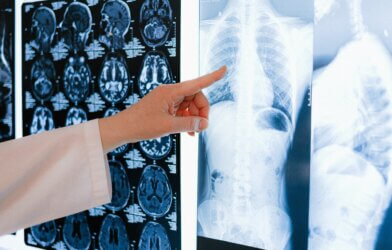Deep Brain Stimulation (DBS) has proven to be a viable therapy for brain disorders like Parkinson’s disease and severe depression. In a recent study, Dr. Katherine Scangos, an assistant professor of psychiatry at U.C.S.F. and her colleagues Drs. Andrew Krystal and Edward Chang discovered biomarkers in the brain that can be strategically activated, further enhancing this treatment.
Dr. Krystal specializes in brain cell control, especially in the area of emotional disorders. Additionally, Dr. Chang has helped to create and implement brain devices to enable speech in those who are paralyzed. The two, along with Dr. Scangos, are highly experienced in brain activity and stimulation. Together, they chose the perfect recipient for the treatment: a 38 year old woman by the name of Sarah who had suffered from severe clinical depression for years.
Like many people battling depression, Sarah tried multiple ways to treat her symptoms, including nearly twenty antidepressants, medical facilities, shock treatment, and TMS or transcranial magnetic stimulation, often the last resort. These therapies, however, did not work. Sarah had suicidal thoughts and was not able to work. Scangos and her team reached out to Sarah, which initiated her journey to a normal life.
They began by investigating the electrical activity in her brain over an extended period of time. Sarah indicated when she felt the depressive symptoms, during which, those networks of neurons were stimulated via jolts of electricity sent directly to specific cells. This research enabled the team to detect the origins of the depressive symptoms in her brain, leading to the discovery of customized biomarkers that were distinct to her symptoms. “One person’s depression might look very different from another person’s depression,” said Dr. Scangos.
Once the biomarker was determined, the team inserted a DBS sensor which was set to detect her biomarkers. It is normal for DBS to be administered on a continual pattern, however, since Sarah’s treatment is specific to her, the team programmed her apparatus to send electrical pulses every six seconds as soon as it detected neural patterns related to her symptoms. The device began treating symptoms immediately at the source.
According to Dr. Darin Dougherty, director of neurotherapeutics at Massachusetts General Hospital, the idea is for DBS to interrupt or change brain activity in order to generate a better pattern that can alleviate symptoms. “Our job now is really to figure out what is it that identifies who needs this kind of intervention,” said Dr. Helen Mayberg, director of the Center for Advanced Circuit Therapeutics at the Icahn School of Medicine in New York City. She was the first to propose DBS as a possible treatment for depression about two decades ago.
Since her device was implanted, Sarah’s symptoms have diminished. She only receives the highest amount of stimulation at certain times. Additionally, the team noticed a decline in the frequency of stimulation.
Sarah described being able to “see things that are beautiful in the world”. “When I was in the depths of depression, all I saw was what was ugly,” said Sarah. “I feel alert. I feel present.”












Comments